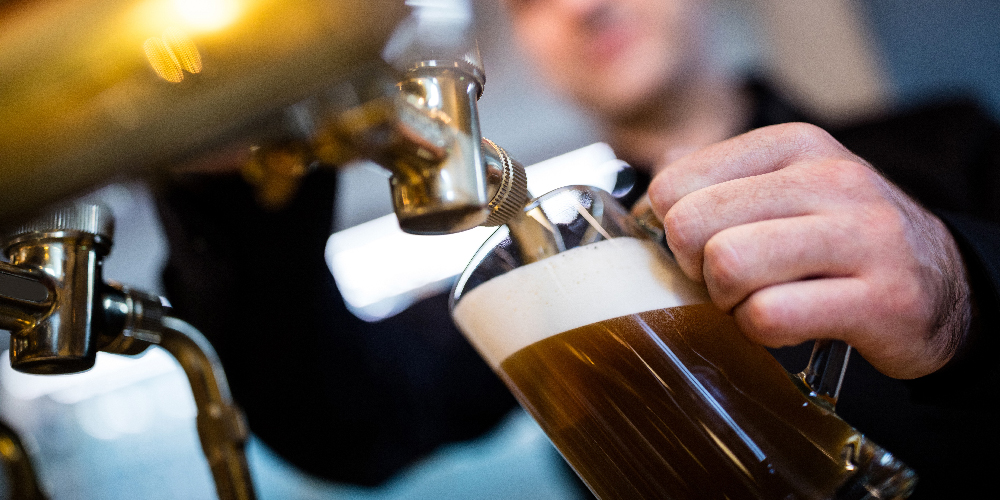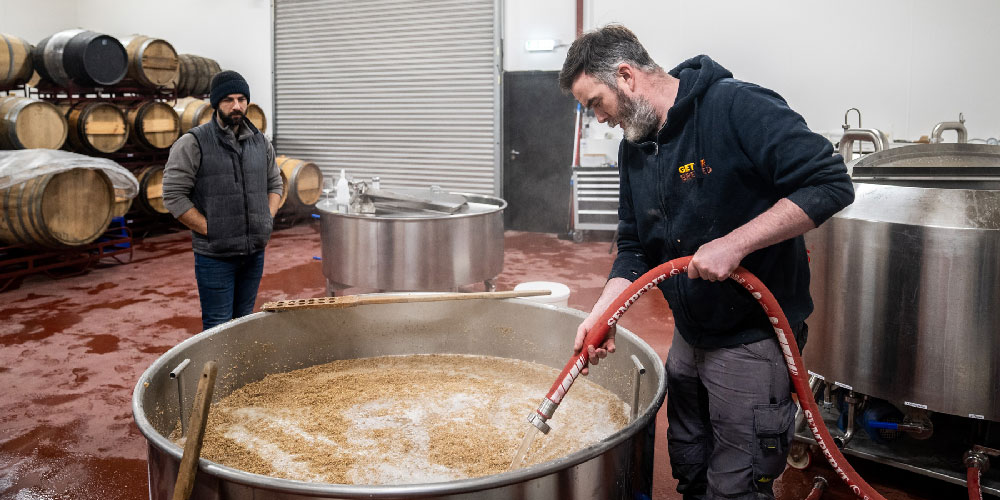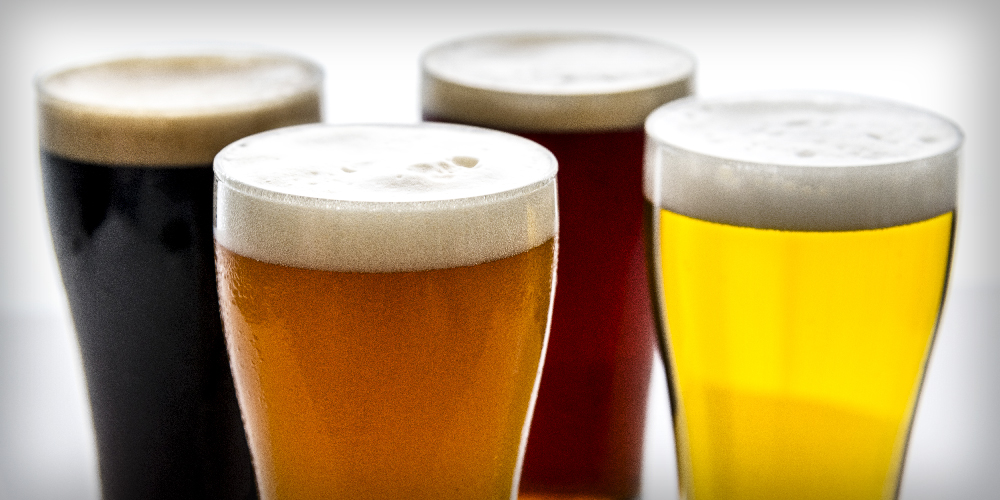
What’s Really Behind the Price of a Pint?
The price of a pint will remain a talking point for as long as they continue to be served. It will be debated as much across beer-soaked bar tops as it shall hastily mashed into the screen of a smartphone and posted on social media. The cost of beer matters to us, culturally and personally, because beer is important to us.
Beer in the UK has, for the best part of the last 100 years, been framed as a working class drink, therefore many consider it should remain at an accessible price point. In this context I mean a typical serving of something like cask bitter, mass-produced lager, or pale ale. The stuff you want to drink by the pint, that you would perhaps enjoy several of over the course of a session. A beverage that demands repeated consumption because it is all at once delicious, refreshing, and affordable.
In terms of beer history, it’s only very recently that the genre has expanded to include heavily hopped double IPAs, strong stouts aged in spirit barrels or loaded with sweet adjuncts, or wild/sour ales that can take years to make. Beers that in many cases are not cheap, and by my reckoning not particularly accessible—beverages that are made in far smaller amounts, often with expensive ingredients used in high volumes.
One reason the debate over the price of beer has become so much more nuanced, because beer itself has rapidly become more complicated, and the majority of people who drink beer are still catching up with this evolution. Most will never bother, as they rightly want to drink affordable, delicious pints. These loyal drinkers should be respected.
But we live in a time when every single aspect of beer’s production is increasing in price, and I mean everything. Not just obvious aspects like raw materials, and energy costs, but a variety of factors across various scales that will influence how many pounds and pence are added to the price of a pint this year.
Many consider the rise of more expensive, dare I say “craft” beer as a negative influence on the overall price of the pint. Some believe price increases to be opportunistic moves to fleece customers out of a few extra quid. While I am not denying this happens, it is certainly not reflective of the majority of breweries, retailers or hospitality owners. The reality is that when it comes to beer making, the margins are as thin as a razor’s edge. With the price of a pint set to increase in 2023, I thought I’d break down every cost I can possibly think of that beer goes through at a brewery, before it gets to your hands, and hopefully help you understand why your favourite beer just went up in price.
Facilities and Equipment
Breweries in the UK come in a massive variety of shapes and sizes, from shed-bound nanobreweries, to gargantuan macro-breweries. There are over 2000 operating at present.
For the sake of this case study, the brewery I’m basing the below on is making 5000hL of beer annually; about 880,000 pints. Of the breweries operating in the UK at the moment, approximately 150 are this size, with some good examples being Marble in Manchester, and Burning Sky in Sussex. The vast majority of breweries in the UK are actually very tiny, producing less than 1000hL of beer (176,000 pints) per year. But the “small-mid” sized brewery works well here, as it also demonstrates a few extra economies of scale (eg: staff) that very small breweries often don’t have.
Before we get to brewing, the first cost is the building itself. It’s most likely a rented warehouse (or railway arch, as is the fashion these days) with a high monthly cost. If the brewery is lucky enough to own its property then it’ll be paying a very large mortgage (that will have recently increased in price), instead of rent.
Ahead of the brewery going into the building, it has to be prepared for industrial grade food production, which is what brewing actually is. This means cleaning the building, connecting a water supply, installing electrics, a large gas burner, a chilling system, a cold room, an office, a small laboratory for sample analysis, and deciding if you want to shell out a fortune on a resin-based or tiled floor before your drainage is installed. Oh yes, you’ll need loads of hosepipes, in various lengths, in several different colours.
Now you can install your brewhouse, a nice 30-hL infusion mashing system designed to make ales, a kettle, and a whirlpool for those lovely, aromatic, late hop additions. You’ll need a large boiler to heat things up, and a heat exchanger to cool things down again, and lots of pumps to move all the liquid you’ll be working with around. A fleet of eight fermentation vessels and a pair of bright tanks for conditioning ahead of packaging should suffice. You’ll also need hot and cold liquor tanks for your brewing and cleaning water, maybe a canning line, a cask washer, a keg filler, some more hosepipes, and finally a CIP system to clean it all with, because now you own a brewery you’re going to spend most of your time cleaning.
We’ve not started brewing yet, but already we’ve spent well over £1,000,000, probably more than double, or triple that, with many of these costs now perennially recurring. And don’t forget most of these things will break down at some point, so you’ll need to pay to get them fixed. Probably quite often.
Utilities
Now you have all this gear, you’ve got to power it. In fact you are going to spend most of your time (when you’re not cleaning) heating stuff up, and then cooling it down again, then keeping it at a constant temperature for several weeks. This requires a significant amount of both gas and electricity. In fact on January 10th, 2023, the UK government recognised breweries as “energy intensive businesses” meaning they’ll get the highest level of support for their energy bills. But even with the support, the bills will be epic, five-figure annual sums, some having increased by upwards of 300% over the past year. All of which adds to the cost of your pint.
Raw Materials
The cost of ingredients is one of the most obvious reasons for the increase in the price of beer. Hops and malted barley (plus other grains including wheat and oats) are used in great quantities to produce beer. If they’re lucky enough, a brewery producing 5000hL of beer per year might be in a position to schedule some of its raw material supply up to four years in advance (in fact this is common with hops, so that farmers know what they need to plant.) But the cost of producing and shipping anything agricultural is going up, as these industries face the same pressures as everyone else. One brewery recently told me their malt prices were increasing by almost 60%—something that it will likely have to immediately pass on to the consumer, otherwise it would start making a loss on each pint sold.
Then there are the many other materials required for brewing beyond the fundamental brewing ingredients of water, malt, hops and yeast. There’s brewing aids such as fining materials, yeast nutrients, water treatment and all of the various cleaning agents you’ll need to keep your expensive brewing operation clean as a whistle (because spoilage will only see your losses outweigh any potential profits.) You’ll also need food grade carbon dioxide (if you can get any, there’s a shortage) to be used for everything from purging tanks to carbonating your beer. Phew.

Staff
Now you’ve got your brewery up and running, and you’ve got your ingredients ready to brew with, you need people to run it for you, and you’re going to need to pay them. In terms of running a brewery there’s some good news in that brewing is a low-paid vocation, so a savvy brewery owner can save themselves some money here.
The average brewery’s salary (according to salary data website payscale.com) is just £22,222 a year, or £10.68 per hour based on a 40 hour work week. Obviously there may be senior positions such as lead or head brewer where the wage is higher, but compared to the rest of the costs in a brewery, this is one that is not currently rising. A typical 5000hL will have around 10-15 staff, depending on what needs doing.
One of the biggest arguments when it comes to the price of beer is wages, because paying people better automatically means more expensive beer. The good news is that more breweries are beginning to pay above the stated average, but it’s also worth considering that if the perception of the price of beer is rooted in its “working class” image, what does it say when the person who makes it can’t afford to buy it?
Would you be happier paying more for your beer if you knew the person that made it was being paid a living wage?
Packaging/POS
Congratulations, you’ve made beer. Now you need to put all those hosepipes you’ve invested in and pack it into your choice of beer’s four golden formats: bottle, can, keg and cask. But before you do, you need to purchase the materials needed to do so. By this point it will likely come as no surprise that the price of both glass and aluminium have increased. Cans have almost certainly become more popular over recent years because their lighter weight means they cost much less to move around.
When it comes to casks and kegs you’ve got a few options: buy your own, with a greater upfront cost but with better value long term, or use a rental company, who will even take care of logistical issue such as collecting and cleaning empties (if you pay extra), but its further demonstrative of how increasing costs will impact the price of what your drinking.
You’ll also need your POS—or Point of Sale material to those who’ve never worked in retail or sales. This means getting labels for your smallpack, and badges for your draught product. Unsurprisingly, the cost of printing these has escalated quite a bit in recent times.
Administration, Duty and Taxes
While there are many obvious costs to running a brewery, there are many that are not so obvious, because they’re usually pretty boring. You’ll need to pay subcontractors, say for example the designer who produced your labels, or the welder that comes and maintains your pipework. Then there are business rates, property tax, VAT, and if you’re lucky enough you might even have to pay corporation tax. But thankfully you only have to pay the last one if you’re actually making a profit.
Then there’s the big one, beer duty. Did you know that after Finland and the Republic of Ireland, the UK pays the highest rate of beer duty in Europe? For a typical beer, between 2.8% and 7.5% ABV you’ll pay 19.08 pence per litre packaged for sale. If our moderately sized brewery is packaging a 30hL batch of beer then that’s going to require £572.40 of duty.
However, there is some good news. Since 2002, breweries producing under 5000hL of beer get a 50% reduction in duty, called Small Brewers Relief. But this being 2023 there’s some bad news as well: the entire alcohol duty system is being overhauled this year, and while the details haven’t been 100% finalised yet, what we can guarantee is that small producers of beer will almost certainly be paying more. All of it adding yet more pence to the price of your pint.

Sales and Marketing
For many breweries there is something of a “brew it and they will come” attitude when it comes to marketing—the idea that, if it’s a good quality product with a nice label, that people will naturally yearn for it. The reality is that there are over 2000 breweries operating in the UK, and more than 10 times that globally, many of them distributing their beer to our shores.
This means that good beer also has to have good marketing that makes it stand out. Luckily, today there are many freely available tools (such as social media) that can be used to market beer, but like with most things, to use them effectively requires skilled individuals who understand both how these systems work, what’s special about your product, and how that can be effectively communicated to customers. This, and I know it’s getting boring right about now, is going to cost you more money.
Logistics
At last, you’ve got a finished beer and you’ve sold it. You simply need to get it from your brewery, to the retailer, via either a logistics company or a distributor. You’ll be thrilled to know that the cost of distributing beer domestically has, like everything else, skyrocketed. And wait until you see how much it now costs to ship internationally! That’s if you have all of your various paperwork in order, of course.
Profit?
Breaking down the various costs (and their increases) like this, could make you wonder why anyone would go into the brewing business at all.
But they do go into the beer industry. Because, like I said at the very beginning of this article, beer is important. While you might not consider all of the above (and the parts of the process I’ve undoubtedly missed) before pressing that first unbelievably refreshing pint of the weekend to your lips, when you do, the fact that the price of a pint is increasing might not feel quite as shocking.
Due to beer’s place within our own, complicated cultural hierarchy here in the UK, there’s an expectation for it to be sold at a certain price point. I think some of these expectations are important, which is why I personally disagree with the notion of “premiumisation” (basically, making it even more expensive) in order to make beer feel more special, and more exclusive. This, for me, is the wrong approach. Beer should be accessible in the UK, because it always has been.
But on the other side of this argument is that hard working brewers deserve to pay themselves a decent wage, and they will only achieve this if their beer is profitable. There is little evidence that, outside of a few rare examples, that breweries increasing their prices are profiteering. The rising cost of beer is happening because these businesses are doing everything they can to ensure their survival against a marching fleet of mitigating circumstances.
The reality is great breweries should have the option to not just survive, but to thrive. The priority now, however, is to make ends meet, which—as uncomfortable as it may be—means you should probably be paying more for your beer.
Something to think about the next time you order a pint and find the urge to declare “‘ow much!”
—Matthew Curtis
Check out our YouTube video on how much a beer costs